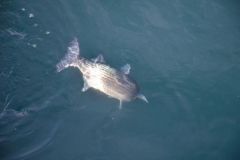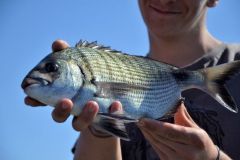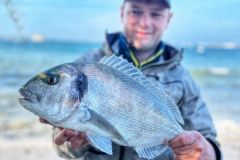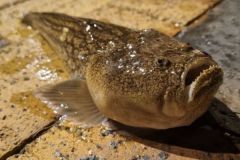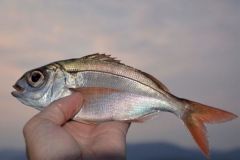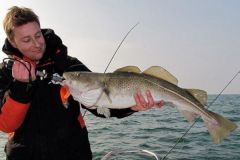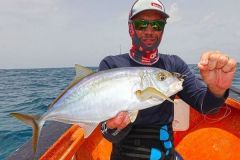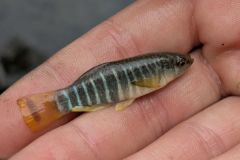Scientific name
Limanda limanda (Linné, 1758)
Morphology
Dab is a flatfish with its head tilted to the right. Its lateral line is curved above the pectoral fin. Its back is light brown with mixed light and dark spots. Its belly, the side facing the sand, is white.
Dab fishing grounds
Dab lives on sand, where it feeds on worms. Its color plays a mimicry role: it is mistaken for the sandy bottom. Found in the North Sea and English Channel.
Fishing techniques
It can be stalked by surfcasting or landing. A hook size 6 to 1, with a long shank, is well suited to the dab's small mouth, although a size 1 to 1/0 is preferable for targeting the 20 cm-plus specimens of this voracious species. This flatfish camouflages beautifully on sandy bottoms, where it is most often found. A small phosphorescent pearl is a plus. When anchored on a shoal, every hook holds a dab!
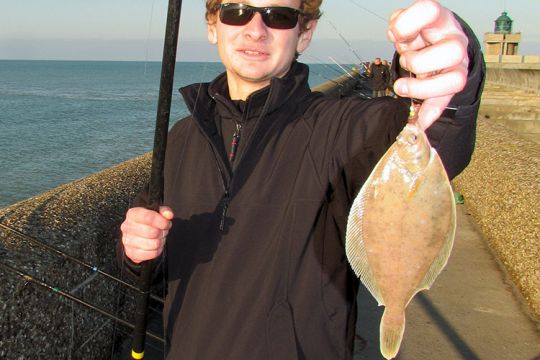
Reproduction
Flounder reproduce between January (south) and August (north). They reach sexual maturity at 29 cm at the age of 3 or 4 (female). This flatfish lays between 50,000 and 150,000 eggs at depths of between 20 and 40 meters. It grows slowly.
Size and weight
- Catch size (legal minimum): none, I recommend 25 cm
- Size at sexual maturity: 29 cm
- Average size: 20 to 25 cm
- Maximum size: 40 cm (1 kg)
Good to know
Dab is particularly common near the coast from winter to April, when it feeds abundantly. Dab are also occasionally present in September and October when the flounder move closer to the coast. They are an unsuspecting fish.

 /
/ 




